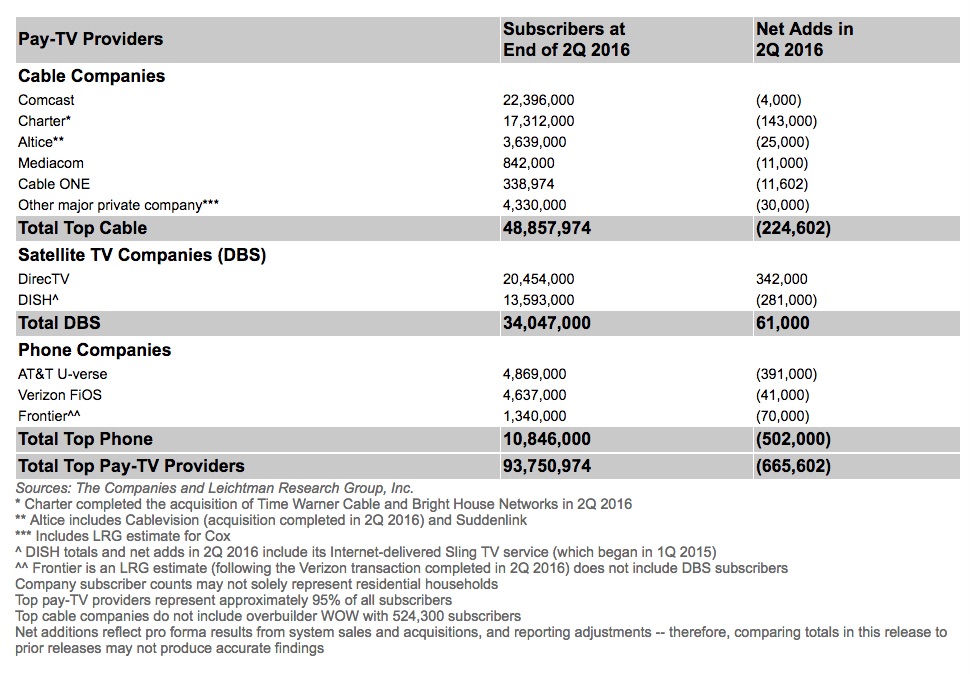The second quarter of each year is generally bad for pay-TV companies, but subscriber losses this year reached new heights.
The 11 biggest pay-TV providers in the US, representing 95 percent of the market, lost 665,000 net video subscribers in Q2 2016, Leichtman Research Group reported today. This is more than double the losses of two years ago. Previously, the companies lost 545,000 subscribers in Q2 2015, 300,000 in Q2 2014, and 350,000 in Q2 2013.
This year's Q2 net losses "surpass[ed] the previous quarterly low set in last year's second quarter," said the research group president, Bruce Leichtman. The group's data goes back to 2001.
The only major TV service to add subscribers was DirecTV, which gained 342,000 in the quarter to boost its total to 20.5 million. But DirecTV is owned by AT&T, whose U-verse TV service lost 391,000 subscribers, resulting in a net loss for AT&T's pay-TV services. Comcast's net loss of 4,000 customers was its best second quarter result in more than 10 years, partly because of its new $15-per-month "cable streaming service." Charter, the new owner of Time Warner Cable, lost 143,000 subscribers to bring the newly merged company's total down to 17.3 million. Dish lost 281,000 and now has 13.6 million subscribers.



 Loading comments...
Loading comments...
